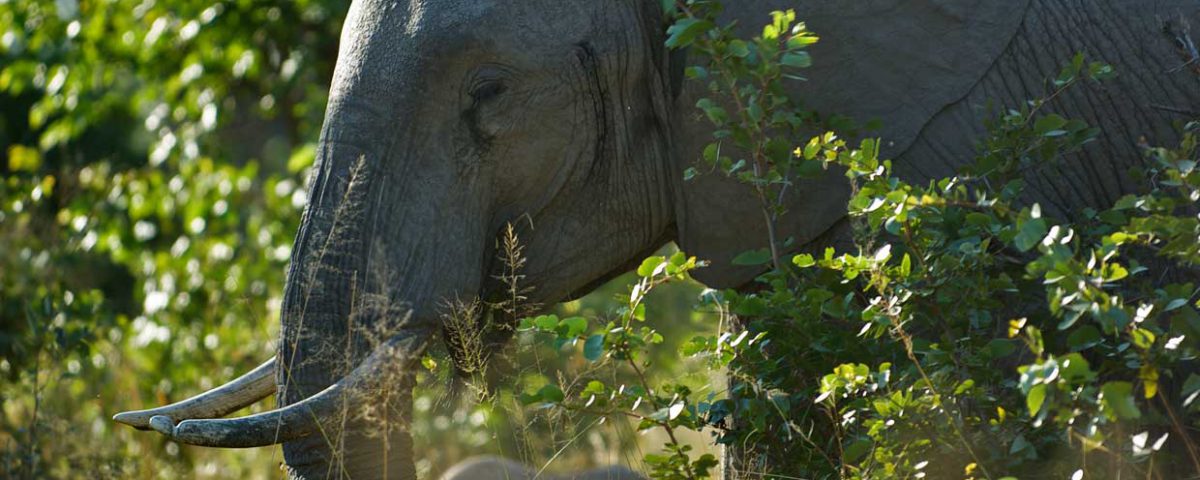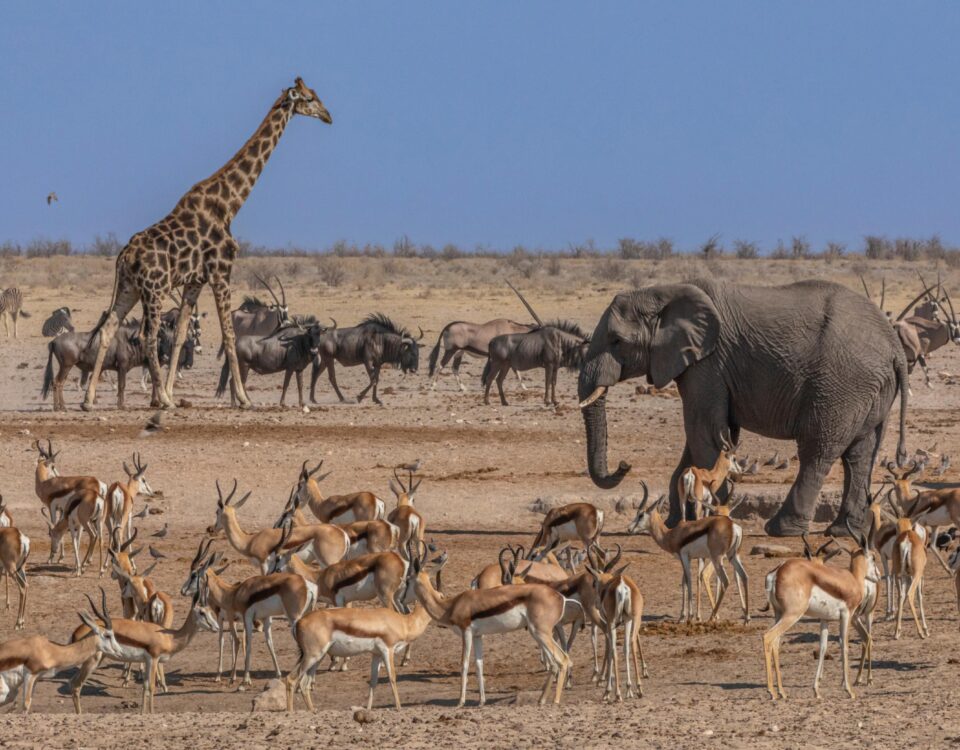Main photo ©Paul van Schalkwyk

Namibia prohibits hunting bans
May 23, 2016
The poaching crisis
June 1, 2016The only light comes from the headlights of the vehicles as we churn through the thick white sand of the Kavango Region. The two ruts of the track wind eerily ahead of us. It is just after five in the morning. Still earlier, our team assembled to serve coffee to the guests in their tents while it is still dark. We know the kind of heat expected later in the day – every day. Hot coffee on cool mornings is all the more appreciated when you know about the heat that the day has in store for you. Text by Jofie Lamprecht
W e are heading to the first pan to look for the ‘round and oval’, as we call the spoor of elephant. The plan is to stretch our legs and have a picnic breakfast at the pan. The tracking team is examining the previous night’s events, etched into the sand around the life-giving water of the pan, which is so important in September when temperatures soar and rain is yet to come. We wear light jackets because at this time of the year the mercury fluctuates between a chilly 10°C (50°F) in the morning to 54°C (129°F) in the midday sun.
In the golden glow of predawn we quickly gather our gear when the trackers find what we are looking for. The twin barrel is cold in my hand as we follow the round and oval towards the sound of breaking branches. From the spoor we can tell that there is a big old bull and a younger askari.
The trackers, Petrus and Langman (Tall Man), move easily through the bush, unravelling the spoor. Everyone walks in silent anticipation of what lies ahead. Would this be our day? Or would we return to the truck and continue our quest on the ivory trail tomorrow? As the red fire ball breaks through the horizon directly in front of us and day breaks, another branch snaps. Everyone freezes. The elephant are close.
The ash bag comes out and confirms that there is a steady early morning breeze in our favour. Abandoning the tracks we now follow the sound of the elephant bull’s noisy breakfast. Without a word the trackers fall in behind Mark and myself as we slowly, quietly advance towards the noise.
What a beautiful scene emerges before our eyes: Under a rosewood tree a huge elephant bull stands with his left side turned to us, as the sun is about to make its ascent to the left of the tree. An incredible picture.
Through my binoculars it is evident that this is a mighty old bull. His body large and heavy. Huge head. Trunk thick between his tusks. His ivory on the left is very thick. Very, very thick. Broken just outside the lip.
Mark and I had a discussion earlier in the week. “Symmetrical ivory would be my first choice, but I will leave it to you to advise me”, I said. Now I indicate my preliminary findings to Mark, but we have yet to see the other side of the elephant to make a final decision.
To our left, branches of small trees break as the smaller askari noisily has the breakfast that we have skipped in our haste to follow the fresh spoor at the pan. We shadow the big bull, waiting for him to turn. He feeds and moves calmly in the brisk breeze of the early morning. At last he turns and shows us his right side, and a long thick piece of ivory – dark with age.
This is a big bull. I hand my binoculars to Mark. He watches as the elephant walks away silently. I know that this is a dangerous angle. Elephant, like warthog, look so much bigger from behind. We move a little further to get closer and allow Mark to get another view of this mighty bull. I am thinking of ways to convince him, should he decline now, that this is a bull we cannot pass on.
“I think we should collect this bull”, Mark says quietly.
Weeks of hard work to prepare for the hunt, followed by days walking mile after mile through thick sand, in the heat of day – and then the moment suddenly and finally arrives. We loop downwind to get ahead of the two bulls and make our approach. As we loop, the young askari edges his way between us and the old bull. Almost like a landmine set to go off if he detects us.

We make our final approach. The bull is standing broadside to us. We have the perfect view for a perfect angle. We choose a side brain shot. At the last second the askari again starts pushing in between us and the target. I whisper to Mark that now is the moment!
Measuring 20.5 inches at the lip, it was the thickest ivory that I had ever hunted.
Now the hard work started. Having hunted this bull in a communal conservancy the meat needed to be slaughtered and delivered to the community. Time was of the essence. In this heat the meat would spoil quickly. It would take two vehicles 24 hours to deliver the meat to an estimated 3,000 people who would benefit directly from the protein of this elephant. Revenue from this trophy hunt goes directly to the community, and our staff is employed all year round even though we use the hunting camp less than three months a year.
Joof Lamprecht 1948 – 2015
My father Joof Lamprecht died on August 31st, 2015 at the age of 67. He was buried at his favourite place in the hills overlooking his beloved Rooikraal Ranch, in eastern Namibia – his life’s work and the fulfilment of a childhood dream. My father taught me to be tough. I learnt hard life lessons only a father can teach his son. Lessons that prepared me for life on this beautiful continent, Africa, and in Namibia, the place we call home. With my mother Marina, they started Hunters Namibia Safaris in 1984. He was a pioneer in establishing dedicated wildlife areas on land previously used for cattle farming and recently won the coveted Dallas Safari Club’s International Outfitter of the Year Award. He was a devoted father to me, my sister Michelle and brother Hanns-Louis and he doted on grandson Mason. He was an outspoken advocate for selective, ethical and sustainable trophy hunting as the most sensible conservation method in our country and beyond.
This article was first published in the HUNTiNAMIBIA 2016 issue.


